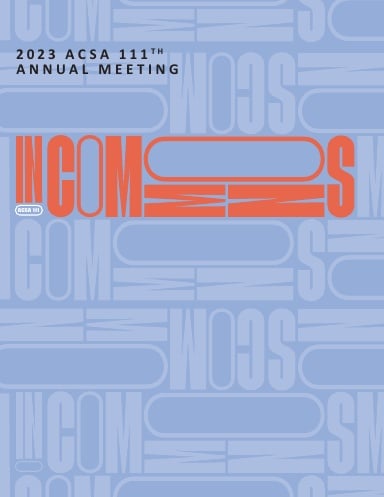Author(s): Ignacio Cardona
In 1969, several publications and international conferences put citizens at the center of architecture and urban design. Robert Sommer discusses the influence of space on human behavior in his seminal book Personal Space. Edward T. Hall wrote the Hidden Dimension about the relevance of cultural perspective in characterizing the space surrounding people. The Dalandhui University of Strathclyde held the First Conference on Architectural Psychology hosted by David Canter, pleading for an architecture interwoven with participatory design. Among these examples, perhaps the most influential is A Ladder of Citizen Participation by Sherry Arnstein, which combines academia and activism, asking for complete and progressive citizen empowerment in design decision-making. In 1969, architecture began to strongly demand the expansion of the discipline to share the common good from a people-centered perspective. Fifty-three years later, the debate on orchestrating the integration of people’s needs persists. Architects design logic to shape the territory following technical needs that do not always find a foothold to include emergent social dynamics. The gap between technical needs and people’s everyday demands has contributed to consolidating inequalities that have already become structural. In the inquiry for transdisciplinary strategies to overlap these multiple needs in the design field, this research proposes the framework of Restorative Community Design (RCD) which includes three theoretical bodies: Restorative Justice, the Right to the City, and Participatory Design. First, Restorative Justice is a branch of criminal justice that seeks to bring together different stakeholders affected by wrongdoing; this theoretical framework aims to address needs and responsibilities and heal damage through the close relationships between various community members. Second, RCD is also based on the theory of the Right to the City, which posits that cities are environments that either allow or limit the development of the capabilities of their citizens and that networked access to the opportunities offered by the city is a fundamental variable to integrates citizen´s capabilities to the opportunities and resources that the city provides. Finally, Participatory Design merges the two previous approaches through a critical understanding of practices to promote community empowerment. This research proposes the working definition of Restorative Community Design by implementing a game technique called PATH (Participatory Architecture Towards Humanity). Specifically, the investigation systematizes the application of PATH in two specific case studies. The first one occurred in Petare (2015), the denser self-produced settlement -commonly called the informal city – in America, located in Caracas. The second experience happened in Flushing (2018), the most racially diverse borough in New York City. Researchers found historically disenfranchised communities in both cases, and Restorative Community Design appears as a conceptual and practical framework for people’s voice integration into the design processes. These implementations of PATHs towards Restorative Community Design discuss the difference between different forms of community engagement, specifically Multi and Trans-Engagement, as a tool to integrate community members in planning and architectural projects.
https://doi.org/10.35483/ACSA.AM.111.54
Volume Editors
ISBN
978-1-944214-41-8

 Study Architecture
Study Architecture  ProPEL
ProPEL 
